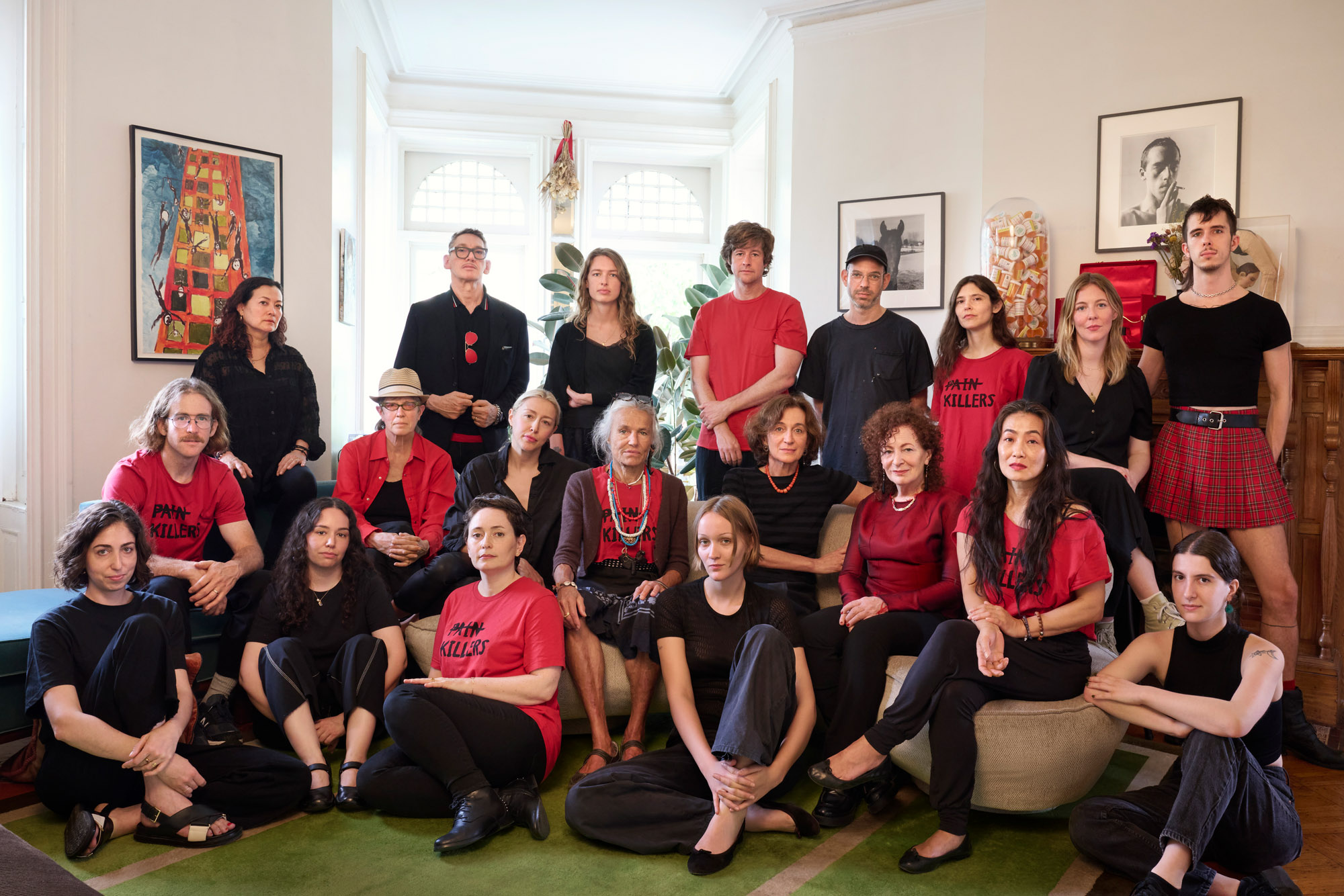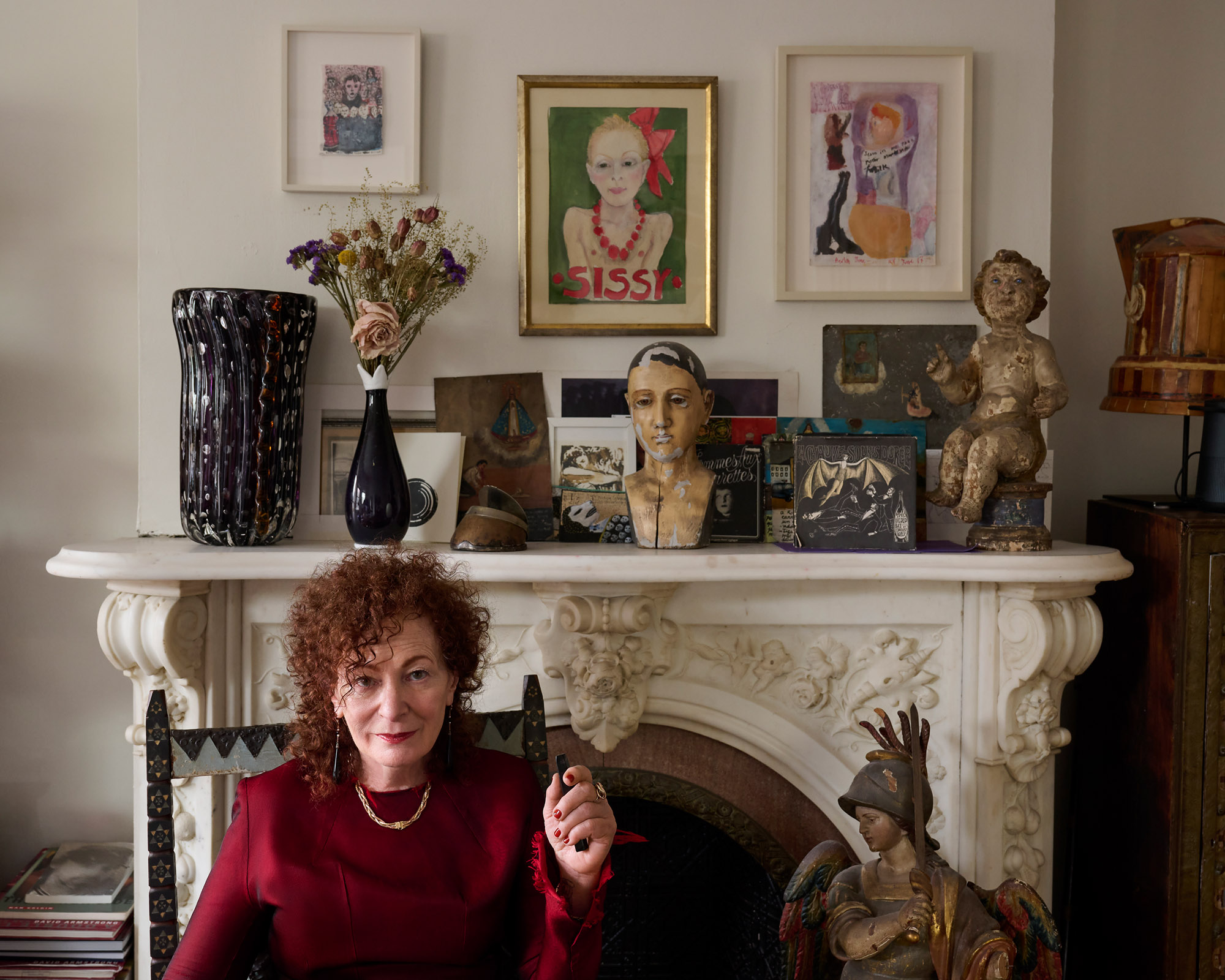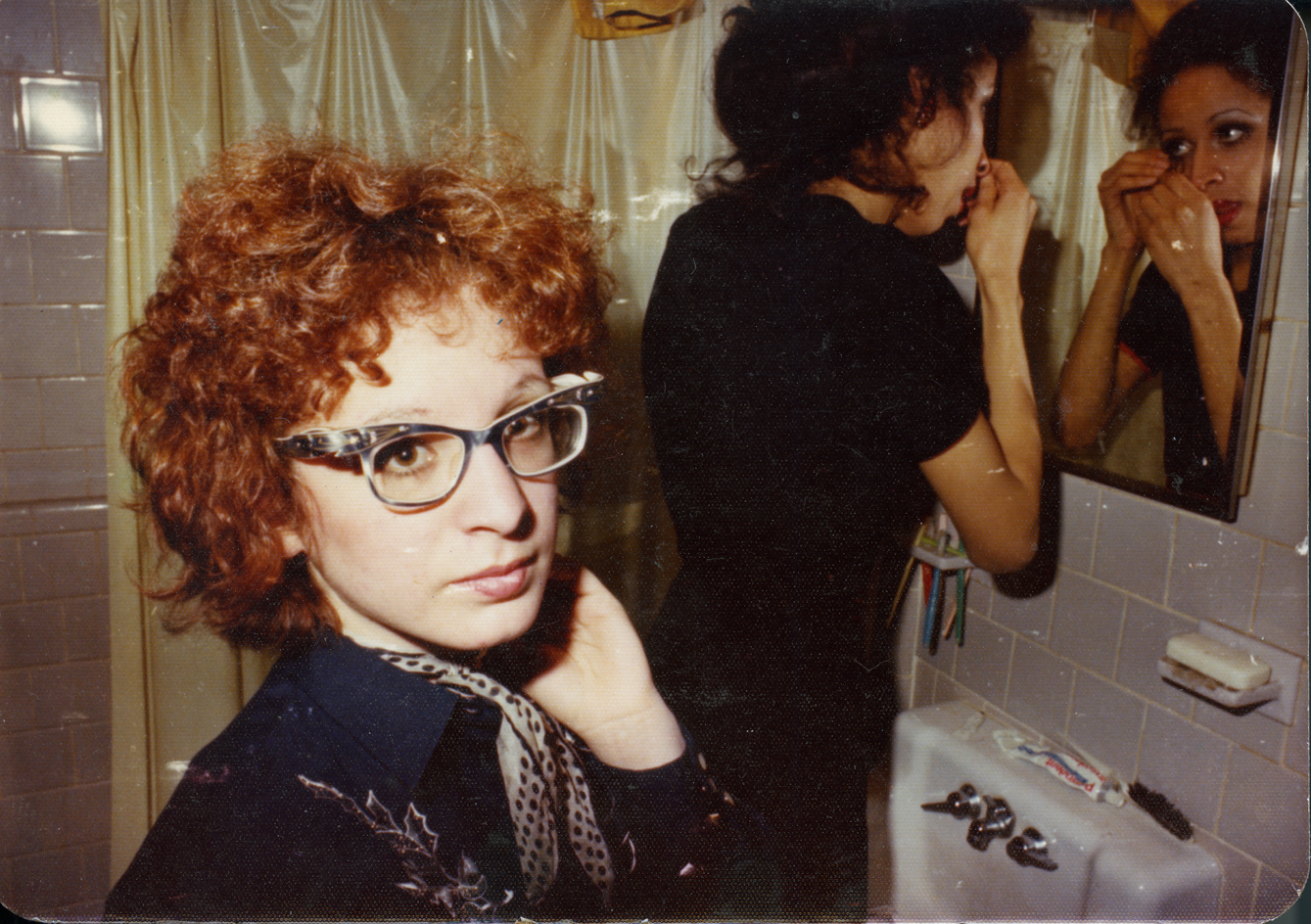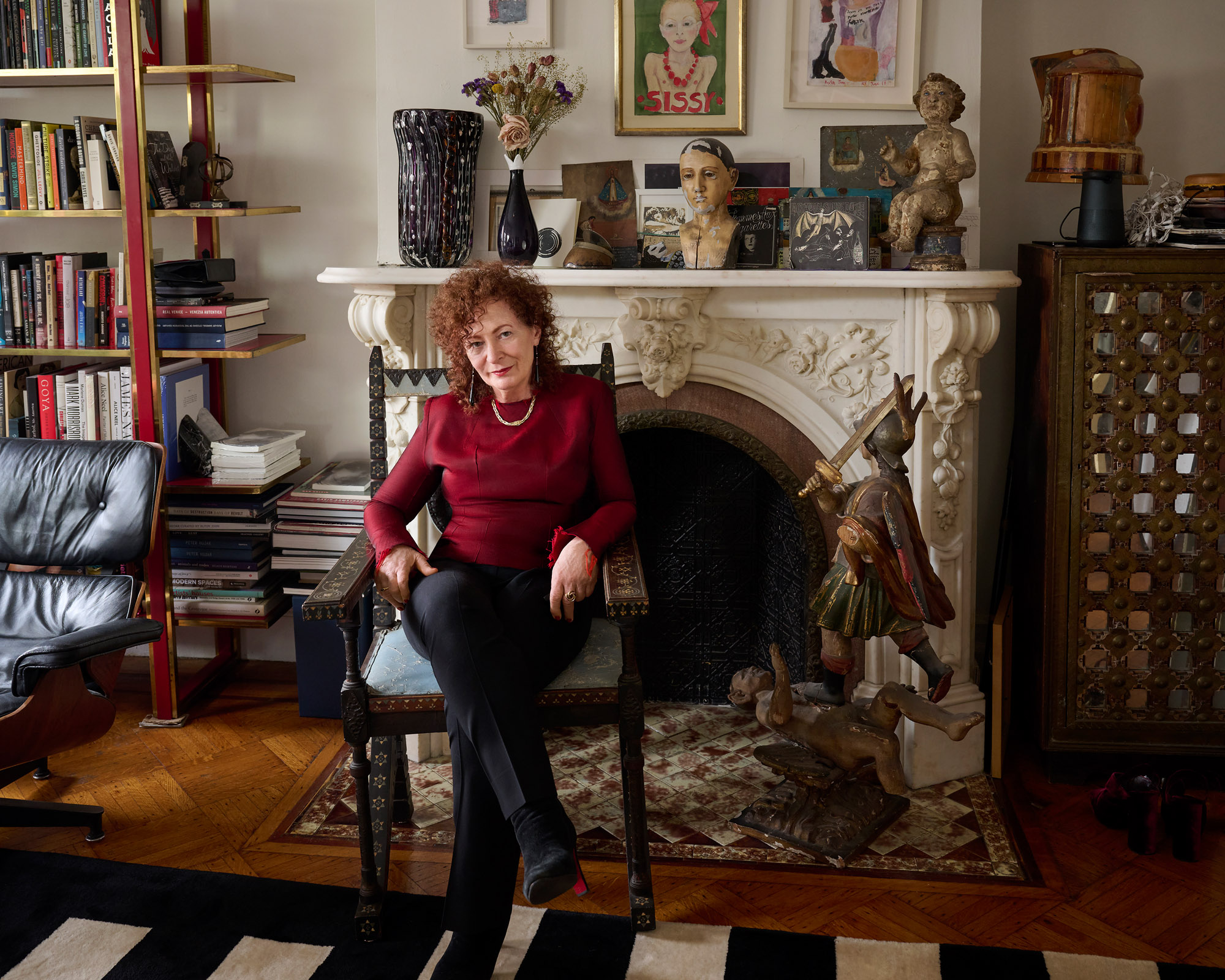Artist Nan Goldin confronts power and accountability in the US opioid crisis
Art and activism can make mighty bedfellows as proved by Nan Goldin when she took on one of America’s richest families

Michael Reynolds - Producer, Noemi Bonazzi - Producer, Jason Schmidt - Photography
Nan Goldin’s photography is a lesson in capturing life; its raw brutality and beautiful banality. Best known for her celebrated slideshows, Goldin’s work documents humanity as a spectrum in which little is off limits. Recently, she has used her influence in art to confront power and accountability in the US opioid crisis, and is recognised in the Wallpaper* USA 300.
Nan Goldin: art, activism and PAIN
Addiction is a complex beast. It can masquerade as cure, ally or pleasure, but often results in pain. Artist Nan Goldin knows about addiction; she’s been inside it, witnessed it, and documented its many facets. She has also confronted its pain, those who have profited from that pain, and used her platform as a force for reckoning.

Nan Goldin in her Brooklyn apartment, surrounded by mementoes of a creative life, including Sissy by friend and artist Greer Lankton
Goldin first took Oxycontin (a strong opioid-based painkiller) in 2014 for tendonitis in her wrist. She had struggled with heroin addiction in the 1980s and got sober; this was different, she was hooked overnight. ‘It was the cleanest drug I’d ever met,’ she said in a now-landmark 2018 essay for Artforum, explaining how her life revolved around the painkiller: ‘Counting and recounting, crushing and snorting was my full-time job. I rarely left the house. All work, all friendships, all news took place on my bed. When I ran out of money for Oxy, I copped dope. I ended up snorting fentanyl and I overdosed.’
In 2017, Goldin went to rehab and got sober. She began reading about the opioid overdose epidemic in the US – which, according to a Centers for Disease Control and Prevention study, killed more than 500,000 Americans between 1999-2020 – and became ‘enraged’. She then came across Patrick Radden Keefe’s acclaimed New Yorker story, The Family That Built an Empire of Pain. It profiled the Sackler family and its pharmaceutical empire, Purdue Pharma, the makers of Oxycontin – who promoted the drug as non-addictive – and shed light on their alleged role in fuelling and profiting from the US opioid crisis. ‘I gave a talk in São Paulo, and there were 3,000 people streaming the talk,’ Goldin tells me via Zoom from her Brooklyn home. ‘I stated that I was going to do something, so then I had to.’
Founding Prescription Addiction Intervention Now
That something was PAIN (Prescription Addiction Intervention Now), the activist organisation that Goldin founded in 2017 to target the ‘toxic philanthropy’ of the Sackler family, expose the arts institutions that accepted their donations, battle stigmas surrounding drug use, and advocate for harm reduction treatment. I’m speaking to Goldin in early June, three days after an appeals court ruled that the Sackler family would receive full immunity from civil suits linked to the US opioid crisis in exchange for a $6bn settlement (Purdue filed for bankruptcy in 2019 amid thousands of lawsuits). ‘It’s what I expected, so I’m not surprised,’ says Goldin. ‘But it’s monstrous, it sets a terrible precedent for other class action suits, and it shows how money buys justice in this country.’
Goldin did not start PAIN because of her own addiction to Oxycontin, but because she was astounded by what she had read about the overdose crisis and those responsible for marketing and distributing the drugs. She began rallying troops – artists, activists and people living with addiction – via small weekly meetings in her Brooklyn apartment and started plotting strategies for direct action. ‘It was very much a communal effort. There was no hierarchy. People threw out ideas,’ Goldin recalls. ‘It was very exciting.’
Among the founding members of PAIN was set designer Noemi Bonazzi, who first met Goldin in 1984. ‘When Artforum gave [Nan] some pages, she used them to denounce the Sacklers. It felt like a very courageous thing to do,’ says Bonazzi. Another was artist Marina Berio, Goldin’s former studio manager, who had learned about direct actions during Occupy and demonstrated at the Guggenheim with the Gulf Labor group. Then there was Mike Quinn, a lawyer specialising in arts and culture law. ‘I became incensed when The New York Times started running full-page ads from Purdue Pharma deflecting responsibility for the opioid crisis,’ he says. ‘I wasn’t much good at being an activist, but I did my part behind the scenes, in court, in Congress and with the press.’
As Bonazzi continues, ‘We were soon joined by more savvy activists who showed us the way in terms of protesting in the 21st century, Megan Kapler being one.’ Kapler, a film producer, met Goldin in 2018 and was invited to attend a PAIN meeting. ‘I immediately knew I wanted to dive in fully,’ she says. ‘Creative ideas and strategies were bouncing around the room and I’d never seen anything like it before. A month later, we staged our first protest at the Met.’
Wallpaper* Newsletter
Receive our daily digest of inspiration, escapism and design stories from around the world direct to your inbox.
Art as a platform for change
The protest Kapler refers to took place in 2018 in the Egyptian Temple of Dendur (in what was then the museum’s Sackler Wing) and features in the opening sequence of All the Beauty and the Bloodshed, the 2022 documentary directed by Laura Poitras. In the scene, members of PAIN shout ‘shame’ and throw pill bottles, labelled with ‘prescribed to you by the Sackler family’, into the temple’s indoor water feature.
The film, which won the Golden Lion at the 2022 Venice Film Festival and was shortlisted for an Oscar, deftly interweaves PAIN’s activism with Goldin’s personal history, from her sister’s suicide to her drug addictions, loves, losses and experiences of domestic violence. ‘It’s been very painful to have a two-hour film out in the world about me,’ says Goldin. ‘But now that it’s on HBO, I kind of leave it alone. I don’t look at it.’
Related story

Goldin’s tactical activism came as a sharp barb for the art institutions, many of whom house her work in their collections. ‘Nan was able to put everything on the line and leverage her position in the art world. And once we chose the museums that we would target, it was all about designing actions that fitted the space and, more importantly, the moment’, says Kapler.
Goldin first picked up a camera in 1968 at the age of 15. Her breakthrough was The Ballad of Sexual Dependency, a diaristic slideshow of images taken in the 1970s and 1980s chronicling the heady fringe cultures of Boston, Berlin and New York. It chronicles the lives of Goldin and her inner circle. Her pictures don’t read as reportage, they read as a hyperreal tapestry of love and loss, ecstasy, agony, sex, violence, power, pain, drugs and moments of mundanity. ‘In The Ballad, an enormous number of people are [now] dead’, says Goldin, referring to the many friends she lost due to AIDS or drug overdoses. ‘There’s a lot of pain associated with that, but they’re still alive in my archive.’
In 1989, Goldin organised the landmark group exhibition ‘Witnesses: Against Our Vanishing’ at Artists Space in New York, the first show to exclusively confront the AIDS epidemic. It came during a time of major protests by ACT UP (AIDS Coalition to Unleash Power), whose tactics inspired PAIN’s approach to direct action. ‘ACT UP was the best activism group in America in the 20th century,’ she says. ‘The difference between ACT UP and us is that it took [them] about ten years to get any response, and it took us [PAIN] a couple of years to reach our goal. That’s because of the media.’

Goldin in her Brooklyn apartment
In one scene in All the Beauty and the Bloodshed, a PAIN demonstration unfolds in New York’s Guggenheim. Fake prescriptions created by the group float like snowflakes from the upper ramps of the museum (a nod to a phrase used by Richard Sackler at a launch event for Oxycontin, in which he predicted ‘a blizzard of prescriptions’ would come). The action of PAIN has contributed to a blizzard of backtracking from major global institutions. Among those who have now scrubbed the Sackler name from their walls, rejected their funding or severed ties completely are the National Portrait Gallery, Tate, V&A and British Museum in London, the Louvre in Paris, New York’s Guggenheim, and most recently, Oxford University, which agreed to cut ties with the family in May 2023 (including removing its name from two galleries in the Ashmolean Museum).
One of Goldin’s proudest moments was in 2021 when she enlisted 77 major artists (among them Ai Weiwei, Cindy Sherman and William Kentridge) to sign a letter to the Met’s board asking for the Sackler name to be removed from the museum. One month later, it did. ‘I think it probably had a lot to do with the final decision,’ she says.
Towards destigmatisation
PAIN’s mission is now focused on solutions to the overdose crisis; working for safe consumption sites, harm reduction and fighting for large settlement funds from the opioid litigation to go directly to communities most in need. ‘I feel the film is the biggest action that we could take because it’s getting to millions of people, not thousands,’ says Goldin. ‘The thing I hope for most is the destigmatisation of mental illness, suicide, addiction and sex work. That’s why I talk about stuff publicly. Also because I don’t know anything else to talk about.’
PAIN’s mission was clear from the outset: ‘We are not anti-opioid – we are anti-Big Pharma,’ their website states. ‘Oxycontin is not a bad drug. It’s perfect for end-of-life or cancer,’ says Goldin. ‘The important thing is to keep people alive. People need to have access to testing machines, to see what’s in their drugs, as well as to safe overdose sites where they can use drugs safely. These should be the norm, not the exception.’
The Sacklers were once synonymous with arts philanthropy. ‘They’ve now become synonymous with the opioid crisis,’ Goldin concludes. ‘And we did that.’ Goldin’s power is erasing the distinctions between the personal and the political; showing issues like drug addiction – so often sensationalised, exaggerated and glorified in media and culture – for what they are: gritty, dirty, ugly and scientific; without nostalgia, without romance, without veneer. The power of PAIN is its fearlessness to square up to power and locate its pressure points, and in turn, forge a new era for accountability, responsible arts philanthropy, and accessible help for those in the grips of addiction.
‘Saying the Sacklers met their match with Nan is almost discrediting to Nan,’ says Kapler. ‘They met a force greater than them, by a mile.’
sacklerpain.org.
Goldin’s travelling retrospective, ‘This Will Not End Well’, will be on show from 7 October 2023 – 28 January 2024 at the Stedelijk Museum, Amsterdam, stedelijk.nl
A version of this article appears in the August 2023 issue of Wallpaper*, available in print, on the Wallpaper* app on Apple iOS, and to subscribers of Apple News +. Subscribe to Wallpaper* today
Harriet Lloyd-Smith was the Arts Editor of Wallpaper*, responsible for the art pages across digital and print, including profiles, exhibition reviews, and contemporary art collaborations. She started at Wallpaper* in 2017 and has written for leading contemporary art publications, auction houses and arts charities, and lectured on review writing and art journalism. When she’s not writing about art, she’s making her own.
-
 Put these emerging artists on your radar
Put these emerging artists on your radarThis crop of six new talents is poised to shake up the art world. Get to know them now
By Tianna Williams
-
 Dining at Pyrá feels like a Mediterranean kiss on both cheeks
Dining at Pyrá feels like a Mediterranean kiss on both cheeksDesigned by House of Dré, this Lonsdale Road addition dishes up an enticing fusion of Greek and Spanish cooking
By Sofia de la Cruz
-
 Creased, crumpled: S/S 2025 menswear is about clothes that have ‘lived a life’
Creased, crumpled: S/S 2025 menswear is about clothes that have ‘lived a life’The S/S 2025 menswear collections see designers embrace the creased and the crumpled, conjuring a mood of laidback languor that ran through the season – captured here by photographer Steve Harnacke and stylist Nicola Neri for Wallpaper*
By Jack Moss